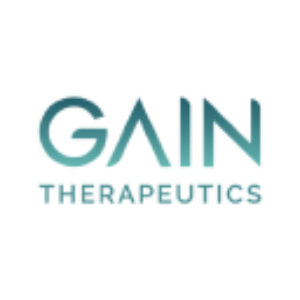Gain Therapeutics Presents Preclinical Data on its Structurally Targeted Allosteric Regulators in GBA1 Gaucher Disease at the WORLDSymposium 2022
Gain Therapeutics (NASDAQ: GANX) has unveiled promising pre-clinical data on its Gaucher Disease program at the 18th Annual WORLDSymposium. The study demonstrated that its STARs compounds significantly increase GCase protein levels, diminish inflammatory cytokines, and enhance lysosomal functions in GD-iPSC-derived dopaminergic neurons. These findings validate the company’s drug discovery platform, SEE-Tx®, and indicate potential for a first-in-class therapy. Gain aims to commence IND-enabling studies in Q4 2022, addressing unmet needs in neuronopathic Gaucher Disease treatment.
- Increased GCase protein levels in both WT and GD dopaminergic neurons.
- Reduced pathogenic p-α-synuclein levels in treated cells.
- Enhanced autophagic flux and lysosomal function through STARs.
- Orally bioavailable lead STARs showing promise in relevant models.
- Validation of innovative drug discovery platform, SEE-Tx®.
- Plans to initiate IND-enabling studies for GD program in Q4 2022.
- Current approved treatments for GD do not cross the blood-brain barrier, leaving an unmet medical need.
- Potential risks associated with the progress of research and development programs.
Insights
Analyzing...
Study results demonstrate GBA1-targeted allosteric regulators increase GCase protein levels, reduce the production of inflammatory cytokines, and improve key lysosomal functions
BETHESDA, Md., Feb. 08, 2022 (GLOBE NEWSWIRE) -- Gain Therapeutics, Inc. (Nasdaq: GANX) (“Gain”), a biotechnology company transforming the drug discovery paradigm with structurally targeted allosteric regulators (STARs) identified with its proprietary computational discovery platform, today presented new pre-clinical data from its Gaucher Disease (GD) program. These results were highlighted in a late breaking abstract presentation at the 18th Annual WORLDSymposium on lysosomal disease research being held February 7 – 11, 2022 at the Manchester Grand Hyatt in San Diego, California. The data generated in GD-iPSC-derived dopaminergic neurons show that the tested compounds increase the levels of GCase protein, deplete phosphorylated alpha-synuclein and increase autophagic flux.
“These data are further validation of our innovative proprietary drug discovery platform SEE-Tx® as well as the potential of our lead compound to restore key lysosomal functions thus showing promise as a first-in-class therapy for the treatment of neuronopathic GD,” said Eric Richman, Chief Executive Officer of Gain. “We remain on target to initiate IND-enabling studies for the GD program in the fourth quarter of this year.”
The effect of STARs treatment on lysosomal function was presented from studies in two different models – the GD-iPSC-derived dopaminergic neurons, and a BE(2)-M17 dopaminergic-like neuron model expressing mutant GBA. The presentation titled “Development of Structurally Targeted Allosteric Regulators for the Treatment of Neuronopathic Gaucher Disease” demonstrated the following results:
- Orally bioavailable and brain-penetrant lead STARs have shown promising effects in relevant in vitro models of GD.
- Increased total and lysosomal GCase in WT and GD dopaminergic neurons.
- Lowered pathogenic p-α-synuclein129 in WT and GD dopaminergic neurons.
- Induced the formation of autophagosomes and increased autophagic flux, thus improving lysosomal function in WT and GD dopaminergic neurons.
- Increased GCase protein levels in GD macrophages.
- Effectively reduced the production of inflammatory cytokines by GD macrophages.
Gaucher Disease is a lysosomal storage disease characterized by deficient activity of the glucocerebrosidase enzyme (GCase) encoded by the GBA1 gene. This deficiency results in the toxic accumulation of substrates in the liver, spleen, bone marrow, and nervous system. Recent evidence shows that GBA1 mutant neurons exhibit lysosomal alterations, defective autophagic clearance, accumulation of protein aggregates, and increased vulnerability to cell death. Therefore, targeting these mechanisms could improve and even prevent neurological symptoms. Current approved treatments for GD do not cross the blood-brain barrier thus leaving a high unmet medical need for the development of novel advanced therapies that can target neuronopathic GD.
About Gain Therapeutics, Inc.
Gain Therapeutics, Inc. is transforming the drug discovery paradigm with structurally targeted allosteric regulators identified with its proprietary computational discovery platform SEE-Tx®. The ability to identify never-seen-before allosteric targets on proteins involved in diseases across the full spectrum of therapeutic areas provides opportunities for a range of drug-protein interactions, including protein stabilization, protein destabilization, targeted protein degradation, allosteric inhibition and allosteric activation. Gain’s pipeline spans neurodegenerative diseases, lysosomal storage disorders, metabolic diseases and oncology. Gain’s lead program in Parkinson’s disease has been awarded funding support from The Michael J. Fox Foundation for Parkinson’s Research (MJFF) and The Silverstein Foundation for Parkinson’s with GBA, as well as from the Eurostars-2 joint program with co-funding from the European Union Horizon 2020 research and Innosuisse. For more information, please visit https://www.gaintherapeutics.com
Forward-Looking Statements
Any statements in this release that are not historical facts may be considered to be “forward-looking statements.” Forward-looking statements are based on management’s current expectations and are subject to risks and uncertainties which may cause results to differ materially and adversely from the statements contained herein. Such statements include, but are not limited to, the expected progress of research and development programs and the effect of STARs for the treatment of Gaucher Disease. Some of the potential risks and uncertainties that could cause actual results to differ from those expected include Gain’s ability to: make commercially available its products and technologies in a timely manner or at all; enter into strategic alliances, including arrangements for the development and distribution of its products; obtain intellectual property protection for its assets; accurately estimate and manage its expenses and cash burn and raise additional funds when necessary. Undue reliance should not be placed on forward-looking statements, which speak only as of the date they are made. Except as required by law, Gain does not undertake any obligation to update any forward-looking statements to reflect new information, events or circumstances after the date they are made, or to reflect the occurrence of unanticipated events.
Investor Contact:
Daniel Ferry
LifeSci Advisors
+1 617-430-7576
daniel@lifesciadvisors.com
Media Contact:
Joleen Schultz
Joleen Schultz & Associates
+1 760-271-8150
joleen@joleenschultzassociates.com








